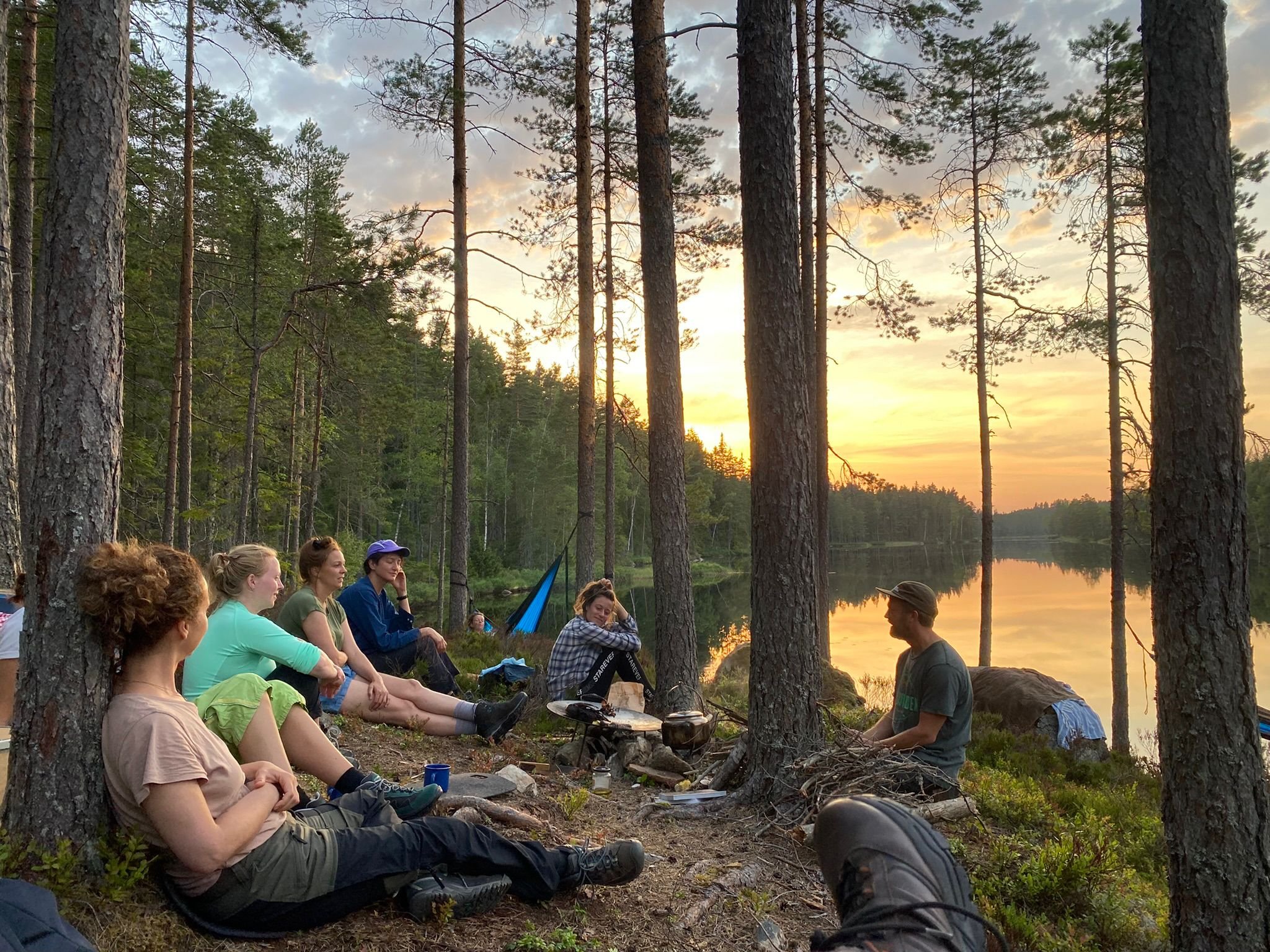Packing list for Wildlife expedition in Sarek National Park
Please make sure that you and your travel companions read through this guide carefully.
We will hike in a difficult area where there are no marked trails. Wet marshland, steep block terrain, brushy willow and mountain birch forest. We will also need to do some river crossings with cold flowing knee-deep water.
In Sarek National Park there is no cabins with sleeping accommodations so we need to carry all our equipment such as tents, sleeping bags, food, cooking equipment etc. This means that our backpacks soon will be full and heavy.
During this trip, we will experience the Sarek National Park, a part of Laponia which is designated as a World Heritage Site by UNESCO. Its wild scenery and expansive views and hopefully we will see the magnificent Sarek moose, Europe's largest moose.
What will the weather be like?
Early August is still considered summer by many, but in September it definitively Autumn. During this time, the Northern Lights begin to make an appearance, making it the ideal time for Aurora viewing.
In September temperatures begin to drop below freezing point. While there may be some snowfall, it usually doesn't accumulate until late October. In September the Autumn leaf colour paints the landscapes in earthy shades, and days are perfect for hiking.
Although the temperatures can fluctuate considerably, we hope to have temperatures between 10 to 15˚C. However, it's not unusual to experience temperatures as low as -5˚C.
How to dress for autumn in Sarek
Be prepared for a wet and cold expedition as weather conditions in Sarek can change quickly with sudden rain showers or snowfall, heavy winds, thick mist or for the lucky few, just a dry breeze and sunshine.
Rainwear and boots will be absolutely essential.
Even without rain or snow, the moist undergrowth in combination with your own perspiration (sweat) makes it difficult to stay dry. And if your clothes and boots become wet they may not dry up until after the expedition. We will do our best and share our advice on how to stay dry and warm throughout the trip.
Our general advice is to dress in several layers as recommended in the packing list below.
clothing
Base layer: This is the layer closest to your skin. One pair of full length trousers and a sweater with long arms to have closest to your body. We recommend merino wool since it keeps you warm even when it is moist, but polyester is also an option. Do not use cotton underwear since it will absorb moisture and make you cold.
Pants: Outdoor/hiking model. It should be able to withstand wear and tear and be large enough to fit your base layer underneath. Do not use denim jeans.
Middle layer sweater: An insulating layer to keep your upper body warm. Wool or fleece. May not be necessary if your base layer sweater is of a thicker kind.
Jacket: Softshell or windproof cotton jacket. (not necessary but comfortable during windy days)
Rainwear: Waterproof pants and hooded jacket. These are usually packed in clear weather and only used in rain. But you may also choose to wear your rainwear even if it is not raining, instead of jacket and pants, to save weight.
Thermal jacket/thick sweater: For cold evenings. Preferably light weight and hooded/high neck.
Night pants: Warm long underwear in wool or polyester for use in the tent/sleeping bag.
Boots: High quality hiking boots with high shaft are strongly recommended. Note that boots with fixed lining will get damp and are difficult to dry during the trip. Boots should be big enough to fit two layers of socks and be well used to avoid blisters and rubbings. Some people prefer rubber boots, but be careful and only choose this option if you have good experiences from this as they are not supporting your ankle in the same way as boots with shoe laces.
Socks: Thin liner sock + thick hiking sock. Wool or synthetic. Plus an extra set of socks.
Extra underwear: At least one set of dry/clean underwear. Do not use cotton underwear.
Headwear: Cap or hat to wear while hiking.
Warm hat: For below zero temperatures at nights.
Thin gloves: Easy to dry, or thin waterproof gloves.
Gaiters: Recommendable, because we hike through wild bushy terrain. If you have low hiking boots you either need to use gaiters or pants that can be snapped/fasten tightly around the boot's shank to prevent water to enter the boots.
Shoes for river crossings: Lightweight shoes, sandals or slippers e.g. Teva or Fivefingers to use during river crossings to protect your feet against sharp rocks.
Personal equipment
We will provide the following equipment:
Tent: Single or double lightweight tent depending on if you prefer to share or not. Sharing makes your backpack lighter.
Sleeping bag: Comfort temp minimum -5 Celsius degrees. A colder sleeping bag can be complemented with a fleece inlet to raise the comfort temperature.
Sleeping mat: Inflatable is preferred.
Cutlery: Plate, cup and spoon.
You need to bring the following equipment:
Backpack: Minimum 60 liters with a padded hip belt and steady frame system that can handle at least 20 kg.
Head torch: Small light LED lamp with extra batteries.
Hiking (Trekking) Poles: It’s very ruff, uneven terrain and hiking poles prevent you from injuries on ankles and knees.
Water bottle: Plastic or steel, 0,5 liter is enough since we can refill from streams regularly.
Pack liner and dry bags: A waterproof liner bag inside of your backpack and smaller dry bags to keep your gear dry.
Hygiene products: Toothbrush, toothpaste, small light weight towel, tampons/pads.
Headlight/head torch: Small light LED lamp with extra batteries.
Toilet paper
Optional equipment
Snacks: Remember to bring your own favourite snacks along, such as; bars, nuts and chocolate.
Personal medication: Inform the guide if you use any medications and if you have any medical problems so that they know in case of emergency.
Camera equipment: Focus on a few good lenses to keep the weight down. Don’t expect to be able to carry several bodies and lenses. Bring extra batteries. You may also want to bring your mobile phone and a power bank (but there is no phone coverage).
Binoculars: Light and water proof. 7-8 x magnification with a 42mm lens is recommended.
Miscellaneous: Knife, compass, map, a book, sewing kit etc.
Also remember
Credit card (you won’t need cash, all places will accept VISA and Mastercard at least)
Passport (check validity)
Train/airline ticket (check so that you arrive in time)
Phone + charger
Electricity adapter: Sweden uses the Europlug (type C and F) and 230 volts
Your own travel insurance (usually included in your house insurance)
How to pack
Pack all of your equipment in a backpack of 50-80 liters. Keep in mind that you will also need to carry your share of the group’s common equipment such as tent, kitchen equipment and food. This additional weight will be about 5-8kg, in total each person will carry about 15-28kg depending on physical strength and current shape. We will divide this equipment between us on the first evening.
Pack clothing and electrical equipment in plastic bags or dry bags. You may also be able to attach some equipment onto the outside your backpack, such as a tent or tent poles.
Keep in mind that less weight means you will have a more enjoyable hike so try to keep the weight to a minimum. A few grams here and there quickly adds up to a few kilos. Use a kitchen scale and weigh your equipment to become aware what adds weight for you. You will soon see how to reduce weight by choosing a smaller towel, a lightweight hat, etc. But remember that function is key!



